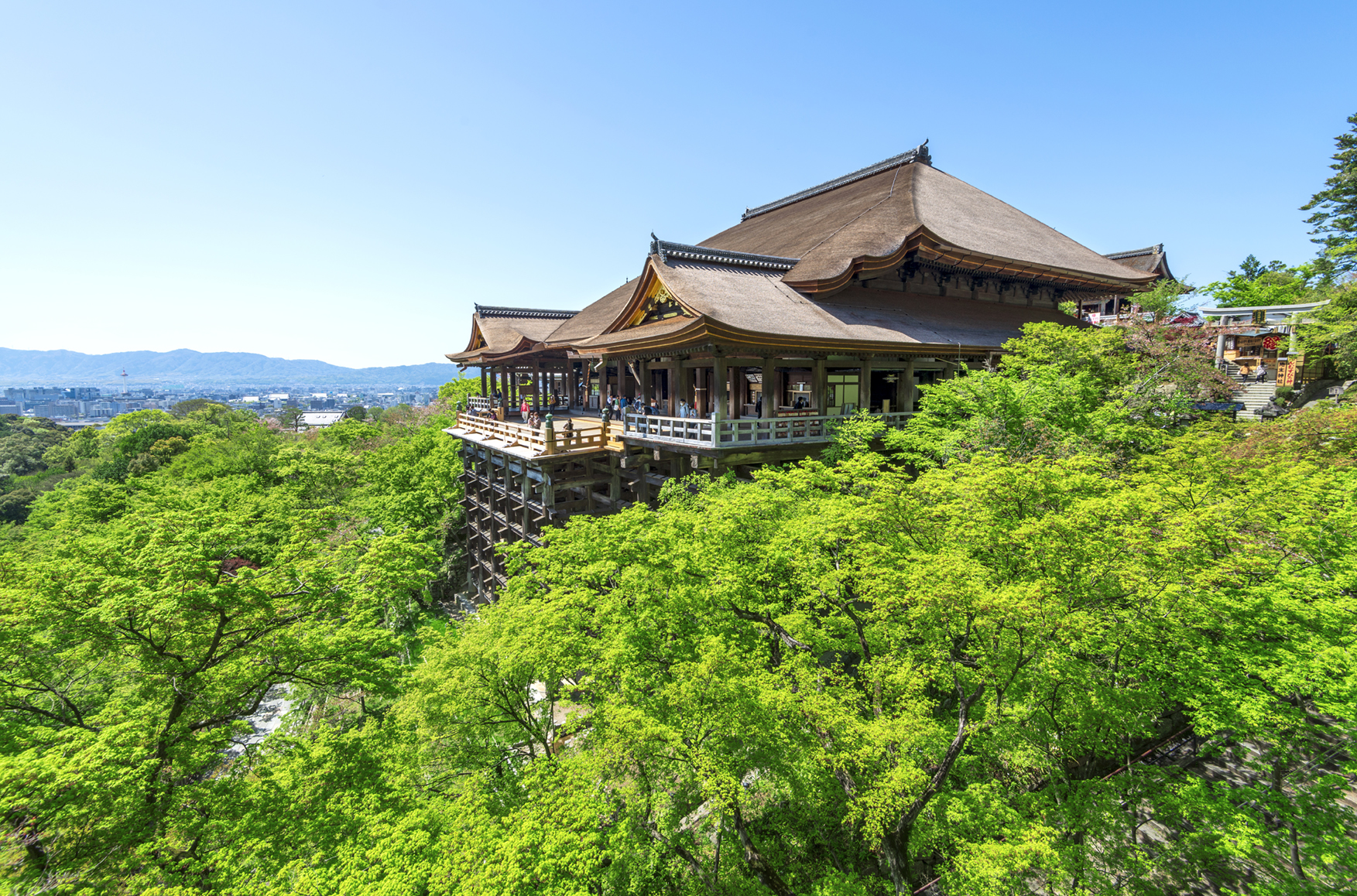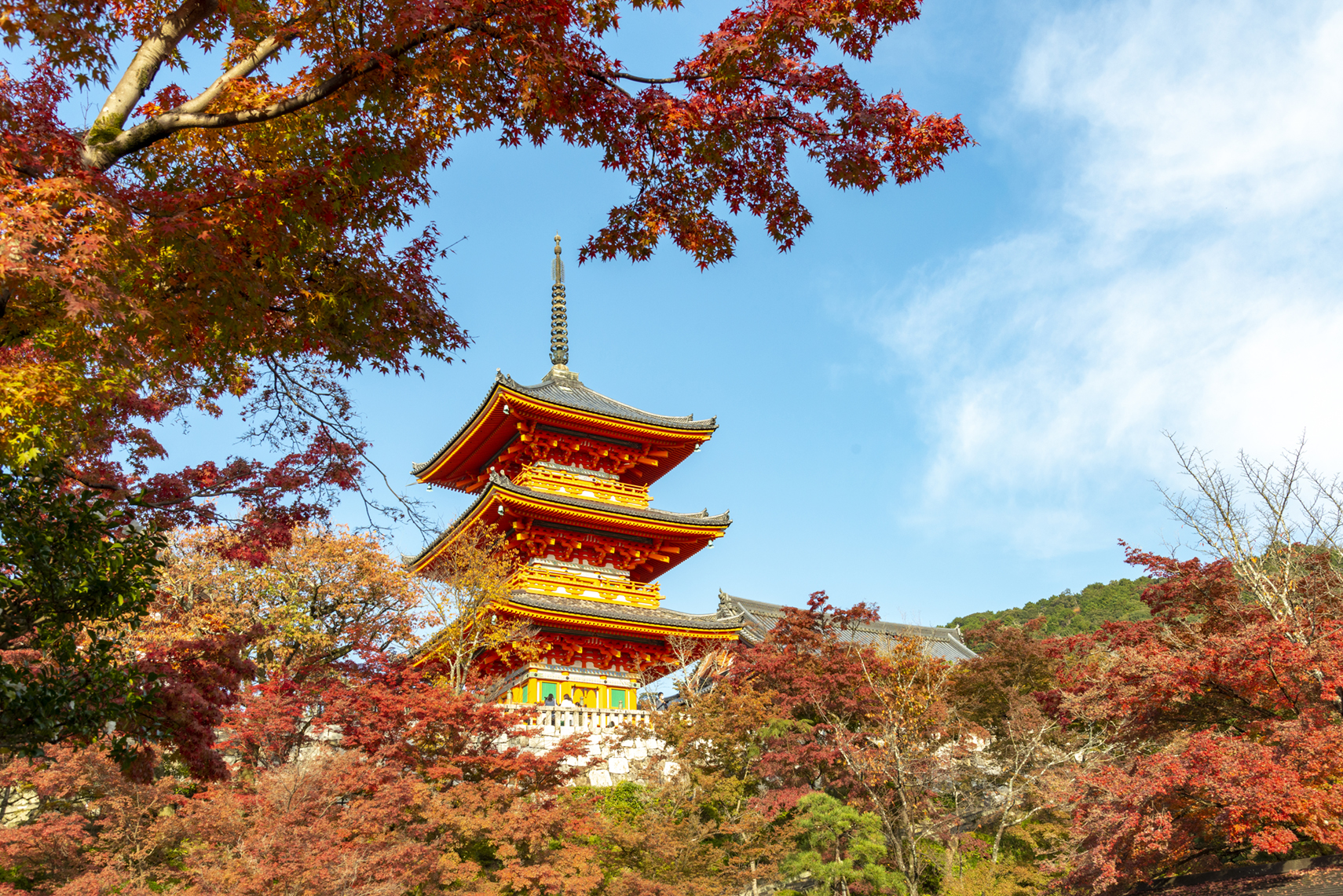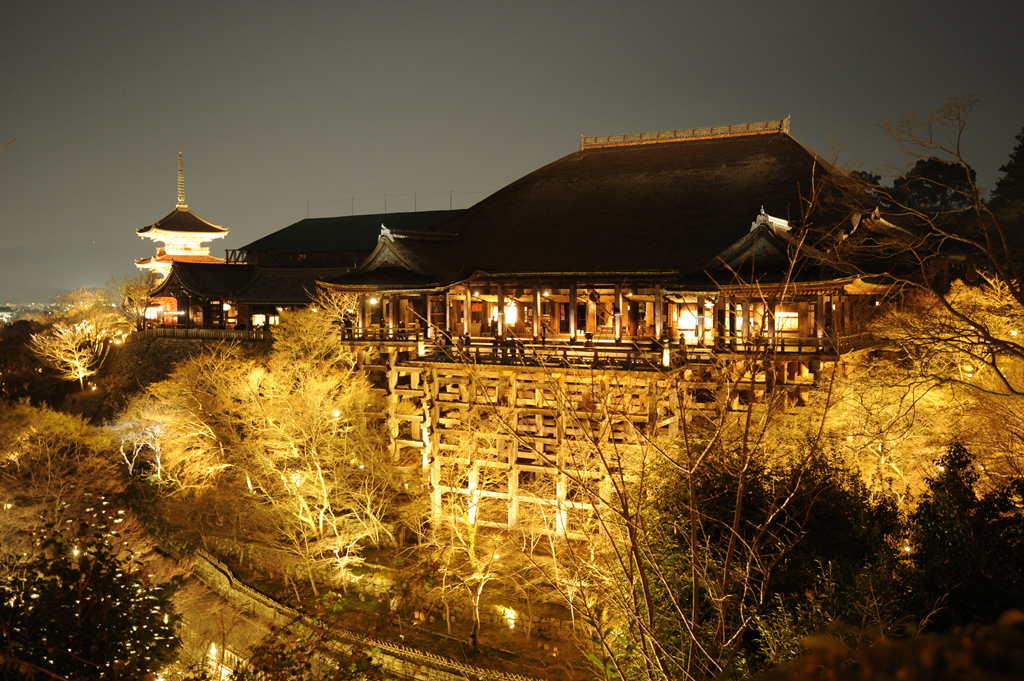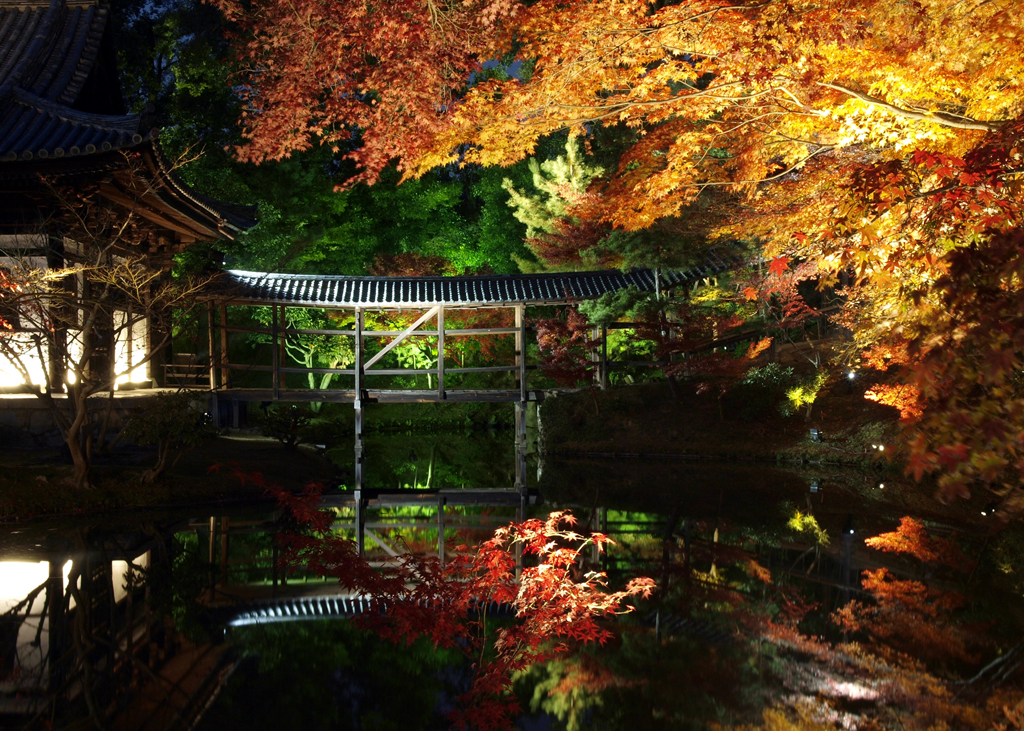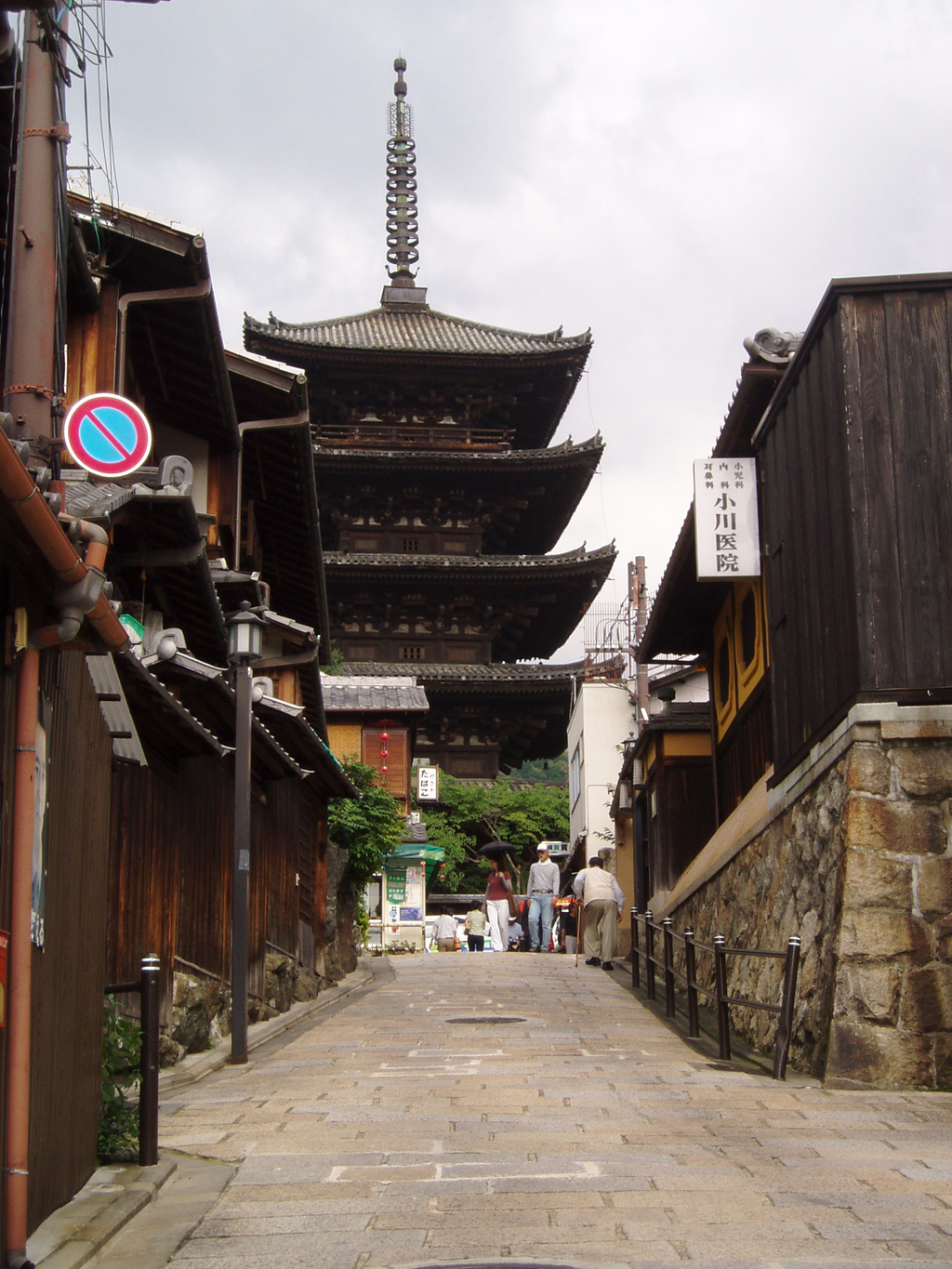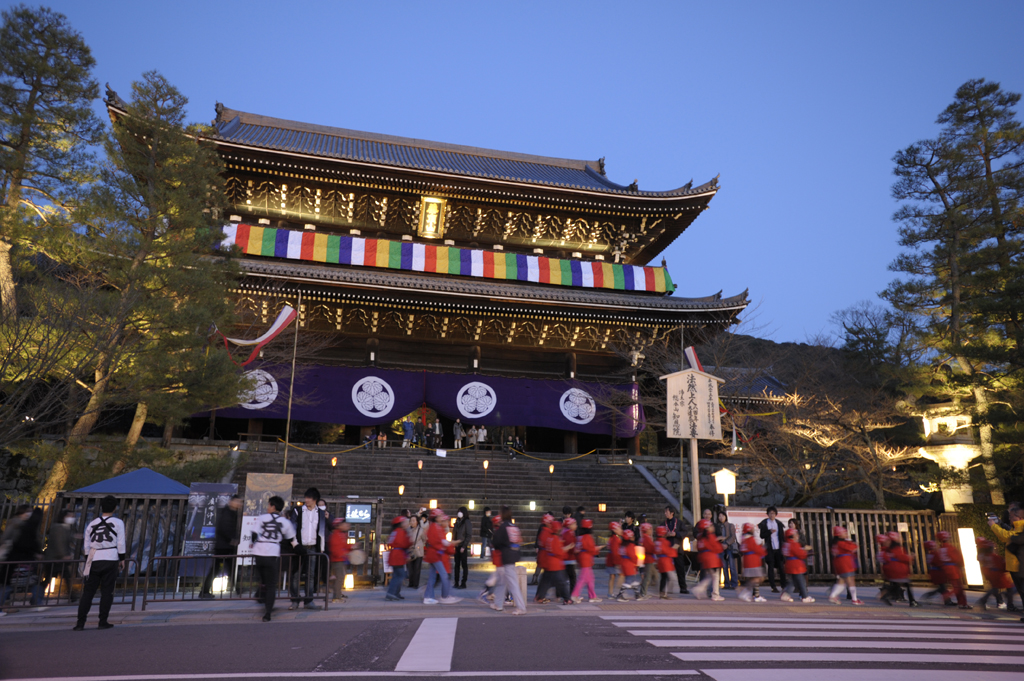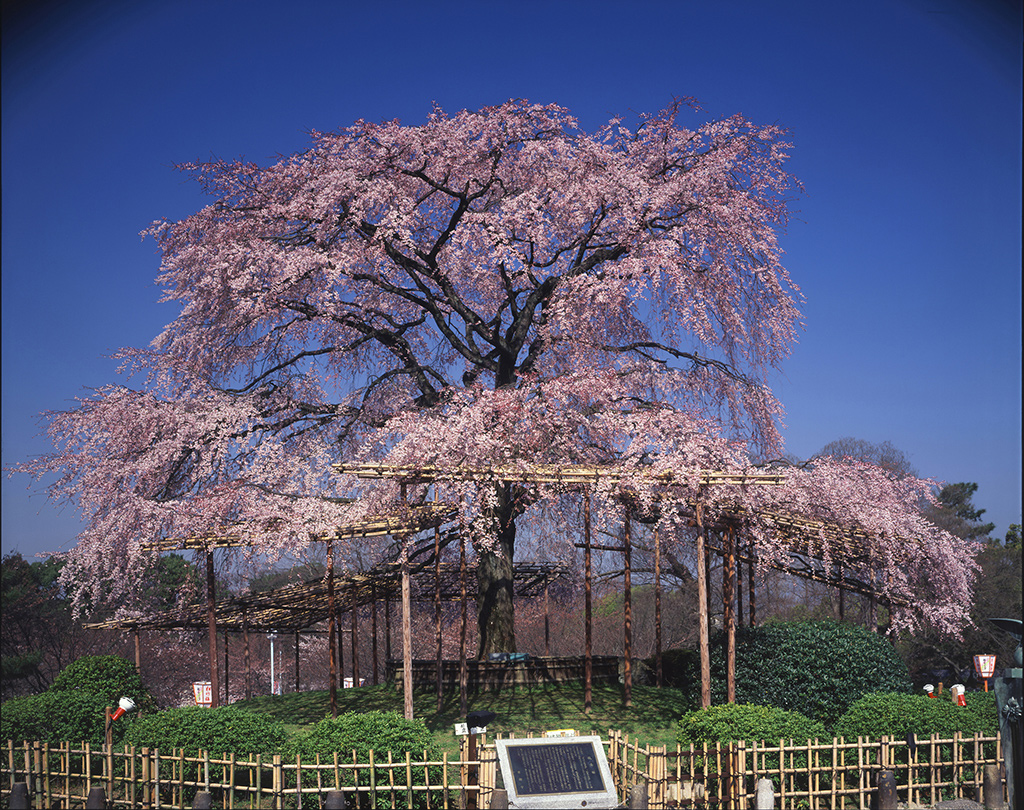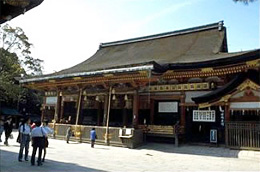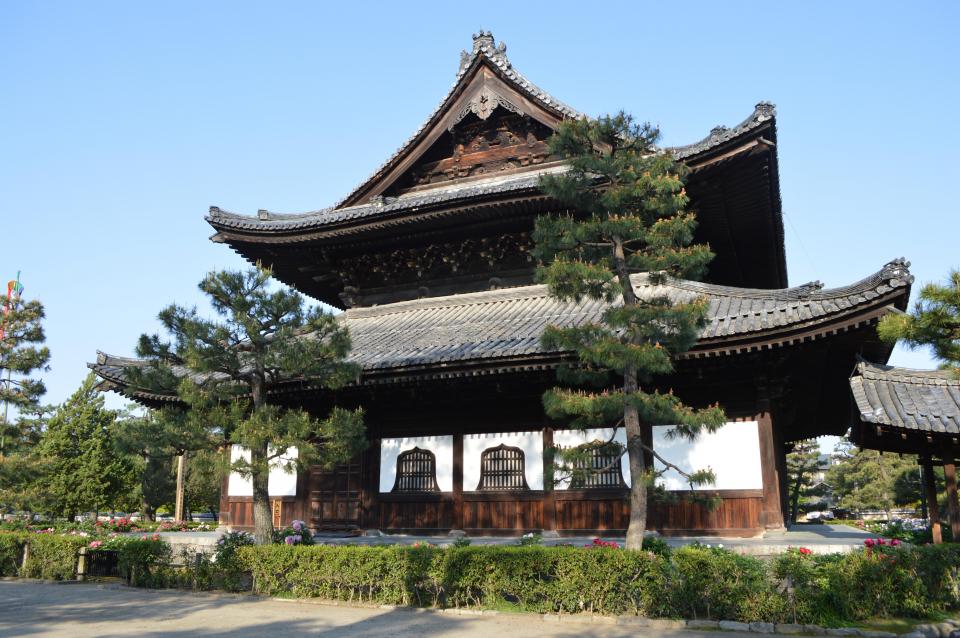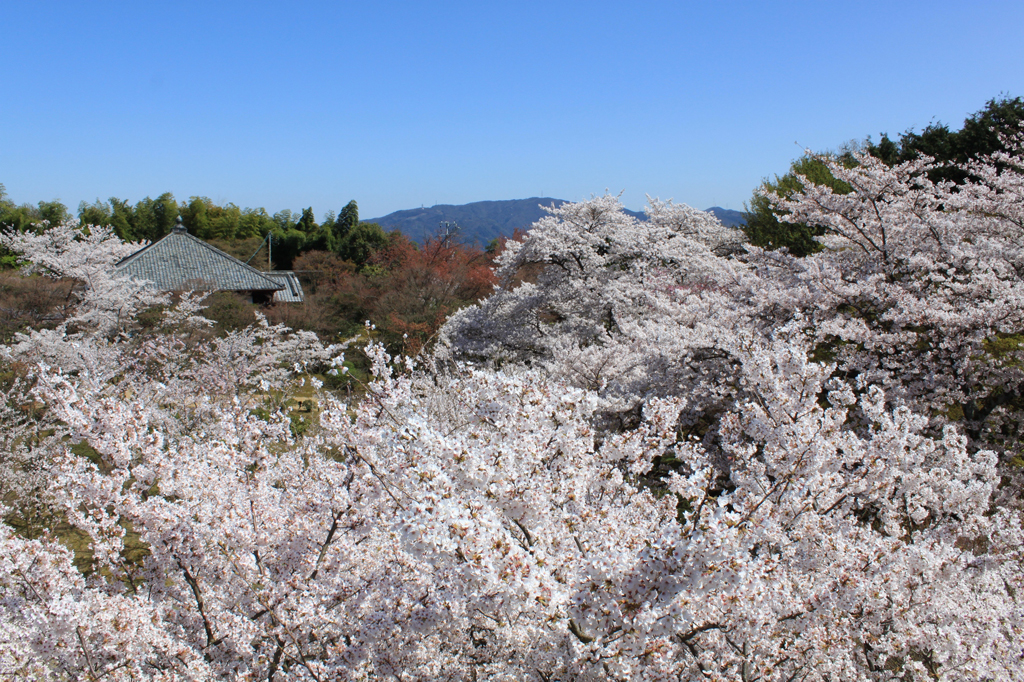The expression “to jump off the stage at Kiyomizu” is the Japanese equivalent of the English expression “to take the plunge”.
Kiyomizu-dera Temple is perhaps the most popular of the temples in Kyoto and is a fixture in the minds of the Japanese people. The temple’s veranda juts out of the side of a mountain supported by 13-meter-high wooden columns. The main hall with its distinctive hip-shaped roof of cypress bark rests to the rear of the veranda and houses within it a priceless statue of Kannon Bodhisattva, the goddess of mercy. From the veranda, one can appreciate fine views facing west over the city of Kyoto. This is an auspicious place to watch the sunset, which may also explain the romantic associations accorded to the temple.
Several other buildings designated as “national treasures” dot the grounds, as do waterfalls and landmarks which have entered popular lore. Thus people come to the temple to drink water from the falls by collecting it in tin cups; the water is said to have therapeutic properties, and drinking from the three different streams is said to confer health, longevity, and success in studies.
There is also a shrine Jishu-jinja Shrine on the grounds, and praying there is said to help one succeed in finding an appropriate love match. People desirous of a romantic partner can be seen walking between two prominent stones with their eyes closed. If one can make the journey alone, this is taken as a sign that the pilgrim will find love. Those who need assistance in making the crossing will require an intermediary to help them find their mate.
The temple is very popular with visitors and has something of a festival atmosphere. Vendors abound who sell talismans, incense, and “omikuji” (paper fortunes). Serious pilgrims come to pray, young people come looking for good fortune in love, visitors come to see the sights, and all fall under the spell of Kyoto’s timeless temple.
Basic Information
- Address : 1-294 Kiyomizu Higashiyama-ku, Kyoto City
- Website : Click here
- Access : Comfortable access to Higashiyama (Kiyomizu-dera Temple)

